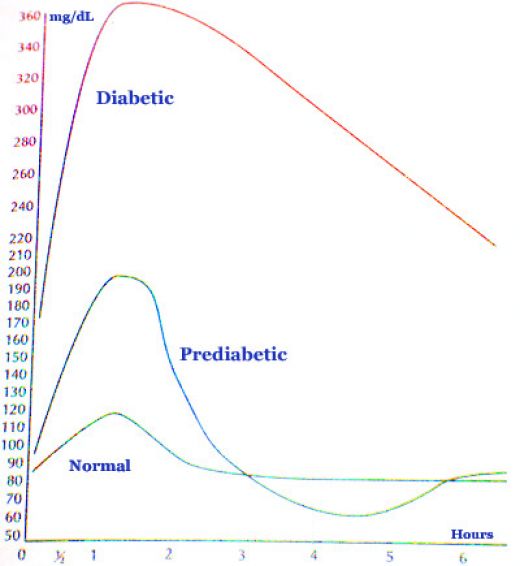Management of Gestational Diabetes
Here we discuss management of gestational diabetes and a natural strategy to prevent uncontrolled changes in your blood sugar.
About Gestational Diabetes
First, a few things you need to know about gestational diabetes so that you can understand what gestational diabetes blood sugar levels mean.
Gestational diabetes is diabetes that is found for the first time when a woman is pregnant. Diabetes means that your blood sugar levels are too high. You body uses glucose for energy, but too much glucose in your blood is harmful for both you and your baby while you are pregnant.
There is also evidence that women that have gestational diabetes are at higher risk for developing pre-diabetes and type 2 diabetes later in life. This may be because pregnancy puts stress on your body and can bring out vulnerabilities.
The changing hormones and weight gain you experience in pregnancy can make it hard for your body to keep up with its need for insulin. When this happens, your body doesn’t get the energy it needs from the foods you eat. Read Gestational Diabetes Diagnosis to find out more about the dangerous complications you want to avoid.
Get all of our best pregnancy tips. Download our free e-guide today!
Learn how to avoid Gaining too much weight, strategies for Avoiding gestational diabetes and secrets for an easy delivery.
Blood Sugar Testing
Blood sugar testing is an important component in the management of gestational diabetes. If you are diagnosed with gestational diabetes, you will need to regularly test your blood so that you become familiar with the relationship between what you eat and the rise in your blood sugar.
To become familiar with your blood sugar levels you need to test:
- Upon waking
- Before you eat
- 1 hour after you eat
- 2 hours after you eat
- Before you exercise
- After you exercise
- Before going to bed
- In the middle of the night
Get a glucose monitoring system that has no coding required (it will say so on the box) and includes a lancing device as well as a few test strips. Follow the instructions to perform a blood sugar level test.
Typically this means using the lancing device on the inside of one of your finger tips to get a drop of blood which you apply to the test strip that you have already inserted into your blood glucose monitor. Touch the test strip to the drop of blood where indicated and wait for the machine to display your test results.
Examples of Gestational Diabetes Blood Sugar Levels
- Fasting blood sugar (upon waking, before breakfast) level above 126 ml/dL (above 100 ml/dL is considered pre-diabetic)
- Blood sugar level before a meal above 126 ml/dL
- Blood sugar level 1 hour after a meal above 160 ml/dL (better to be less than 140 ml/dL)
- Blood sugar level 2 hours after a meal above 140 ml/dL
Need to Talk To Someone?
Do be very specific or personal questions you do not feel comfortable discussing in public forums? If so, please meet signing up for a 60 minute mentoring session.
Pregnancy & Childbirth Mentoring
You will be amazed at the Amount of information and can gain confidence in just a few minutes of one-on-one help.
Examples of Healthy Blood Sugar Levels
- Fasting blood sugar (upon waking, before breakfast) level between 80 - 90 ml/dL
- Blood sugar level before a meal before a meal between 80-100 ml/dL
- Blood sugar level 1 hour after a meal below 140 ml/dL (best to be less than 120 ml/dL)
- Blood sugar level 2 hours after a meal between 80-100 ml/dL
Blood sugar levels between the two scenarios above indicate grey areas that are less than optimal but may not mean you have diabetes. This chart may help clarify what healthy blood sugar levels look like. In terms of management of gestational diabetes, the normal blood sugar level curve is what you are shooting for.

Natural Management of Gestational Diabetes
As a natural childbirth advocate, you already know that maintaining your blood sugar levels thru diet and lifestyle modifications is better than taking simply taking insulin.
Maintain healthy blood sugar levels by:
- Following a pregnancy gestational diabetes diet
- Regularly testing your blood sugar levels until you became familiar with the relationship between what you eat and the changes in your blood sugar
- Get at least 8 hours of sleep a night, more if possible
- Perform 30 minutes of light, low impact aerobic activity each day (like walking or swimming)
- Practicing relaxation throughout our pregnancy
The best thing that you can do in terms of management of gestational diabetes is control what you put in your mouth. Eliminate all processed food and refined carbohydrates from your diet. Ensure you eat protein and healthy fats with every meal to prevent blood sugar spikes.
If you are unable to maintain healthy blood sugar levels with the above strategy then use insulin as a last resort to keep them in check

For More Information about Gestational Diabetes and how to avoid it
Read Pregnancy Gestational Diabetes Diet Diet for more information about how you can keep your blood sugar levels low by following a good pregnancy diet.
Read Gestational Diabetes Diagnosis Diagnosis to find out more about the dangerous complications you want to avoid.
Read Gestational Diabetes Testing for more information about how Gestational Diabetes is diagnosed as well as problems with the current testing.











New! Facebook Comments
Tell us what you think!